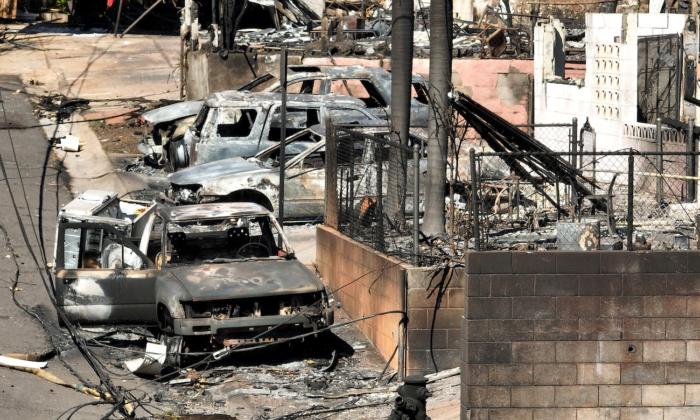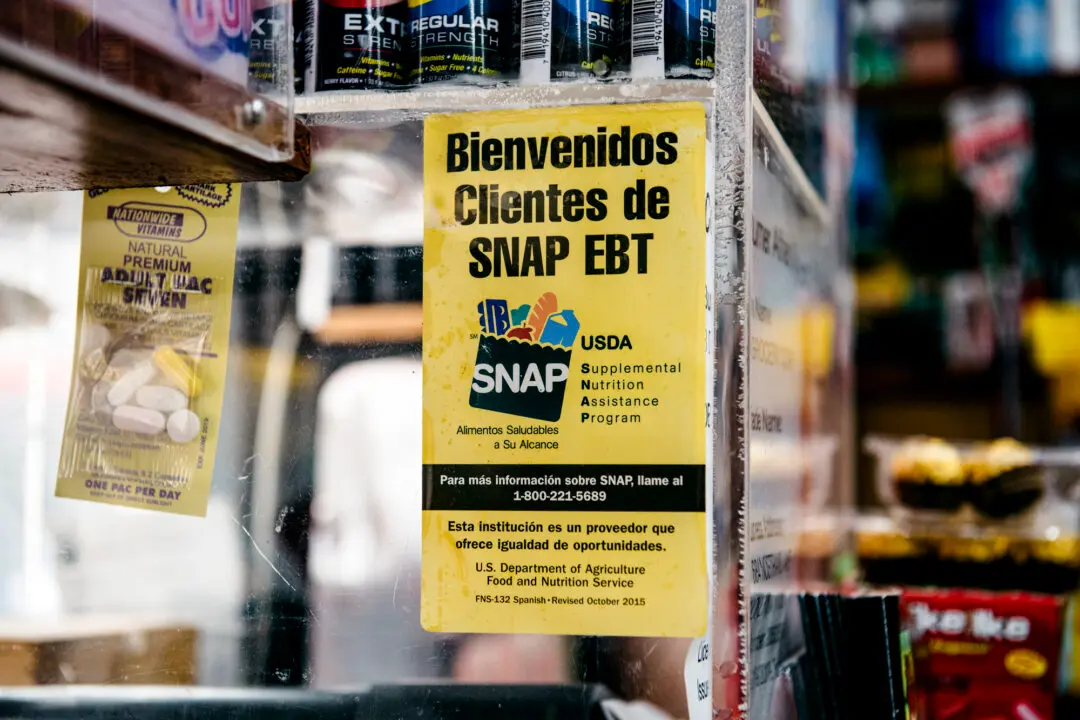Residents on the Hawaiian island of Maui have been urged not to drink tap water and to wear personal protective equipment (PPE) amid an increased risk of toxic chemicals in the air in the wake of devastating and fatal wildfires that left 115 dead.
The Environmental Protection Agency (EPA) announced on Aug. 23 that it had begun removing and disposing of hazardous waste materials, including paints, cleaners, solvents, oils, batteries, and pesticides, from homes in Kula and Olinda impacted by the wildfires and would later begin identifying and removing items thought to contain asbestos as part of its second phase of the removal process.
Days later on Aug. 29, the EPA said officials would begin the same process in Lahaina, in correlation with the Federal Emergency Management Agency (FEMA), and with support from the U.S. Army Corps of Engineers.
After they are removed, the hazardous materials will be shipped to the U.S. mainland where they will be properly disposed of, officials said, noting that during the removal process, the EPA will continuously monitor the air for fine particles of dust.
Additionally, the EPA said officials will spray a non-toxic and biodegradable adhesive known as “Soiltac” on ash on burned properties and structures in order to prevent the ash from blowing off the property and limiting runoff.
In the meantime, the Hawaii Department of Health and Maui County have tested the water for some contaminants, and warned residents not to drink tap water—even if it’s boiled—and instead use bottled water for all drinking, brushing teeth, ice-making, and food preparation until further notice.
“Residents are unable to treat the water in any way to make it safe,” health officials said.
The Department of Health (DOH) has also recommended individuals wear PPE during clean-up efforts to avoid skin contact, noting that burn areas are extremely hazardous.

Residents Urged to Wear PPE
“DOH advises avoiding the burn area until search and recovery efforts are completed and it is cleared of hazard materials and structural ash,” health officials said. “Those near the burn site should wear protective face masks, goggles, gloves, long-sleeves, pants, socks, and shoes to avoid skin contact with ash.”DOH recommends wearing a tight-fitting respirator mask approved by the National Institute for Occupational Safety and Health or with N95 printed on it.
“Please take necessary precautions and seek medical assistance if feeling unwell. Children and pregnant people are at higher risk from the debris hazards and should not help with clean-up efforts,” DOH said. “Top hazard concerns in the burn area include unstable structures, debris, and toxic contaminants present in debris and ash. Other heavy metals and chemicals may also be present in ash after a wildfire and could present a hazard,” officials added.
Additionally, health officials have advised residents—in particular children, the elderly, and those with preexisting respiratory conditions such as asthma and chronic obstructive pulmonary disease—to limit outdoor activities to reduce exposure and minimize health risks, while those staying indoors are advised to close all windows and doors.
However, the warnings may be too late for some, according to Maui County Councilmember Tamara Paltin, who chairs the Disaster, Resilience, International Affairs, and Planning Committee.
“The arsenic, the asbestos, the lead. Close to the burnt zone, we’ve heard from volunteers having adverse effects,” she said. “One lady I had heard was coughing up blood after being there a number of days.”
Another resident, Kekoa Lansford, claimed he had experienced issues with breathing and was “coughing up black stuff and nasty stuff” following the wildfires.

‘Burning Feeling in Chest’
Elsewhere, resident Kiley Adolpho told the publication that she was left with a “burning feeling in the chest” and throat while in an area known as the Red Zone, where many evacuations took place.“I definitely need to use a respirator,” she said. “It protects you from dust, fine particles, but not the toxic air. And I’ve been here for two weeks now.”
Ms. Adolpho said she believes the problems will likely lead to long-term effects, telling CBS, “Come back 20 years later, 10 years later and you'll see how many native people are sick.”
The EPA has said it expects the cleanup operation on Maui to take several months to complete but officials have warned high winds and severe drought conditions continue to threaten parts of the island and could hamper recovery efforts.
“In our lifetimes, Hawa'ii has never been tested like this,” Maj. Gen. Kenneth S. Hara, Maui County Mayor Richard T. Bissen Jr., Hawaiian Electric President and CEO Shelee M.T. Kimura said in a joint statement late Tuesday. “We will do what we have always done when confronted by hardship and heartbreak – we will stand together for our people and communities and work to keep them safe.”
In a statement, Hawaiian Electric officials said there was no electricity flowing through its powerlines when a second fire broke out on Aug. 8, adding that it was “surprised and disappointed” by the “factually and legally irresponsible” lawsuit.
The company noted the cause of the fire, which spread quickly to Lahaina, has not yet been determined.







